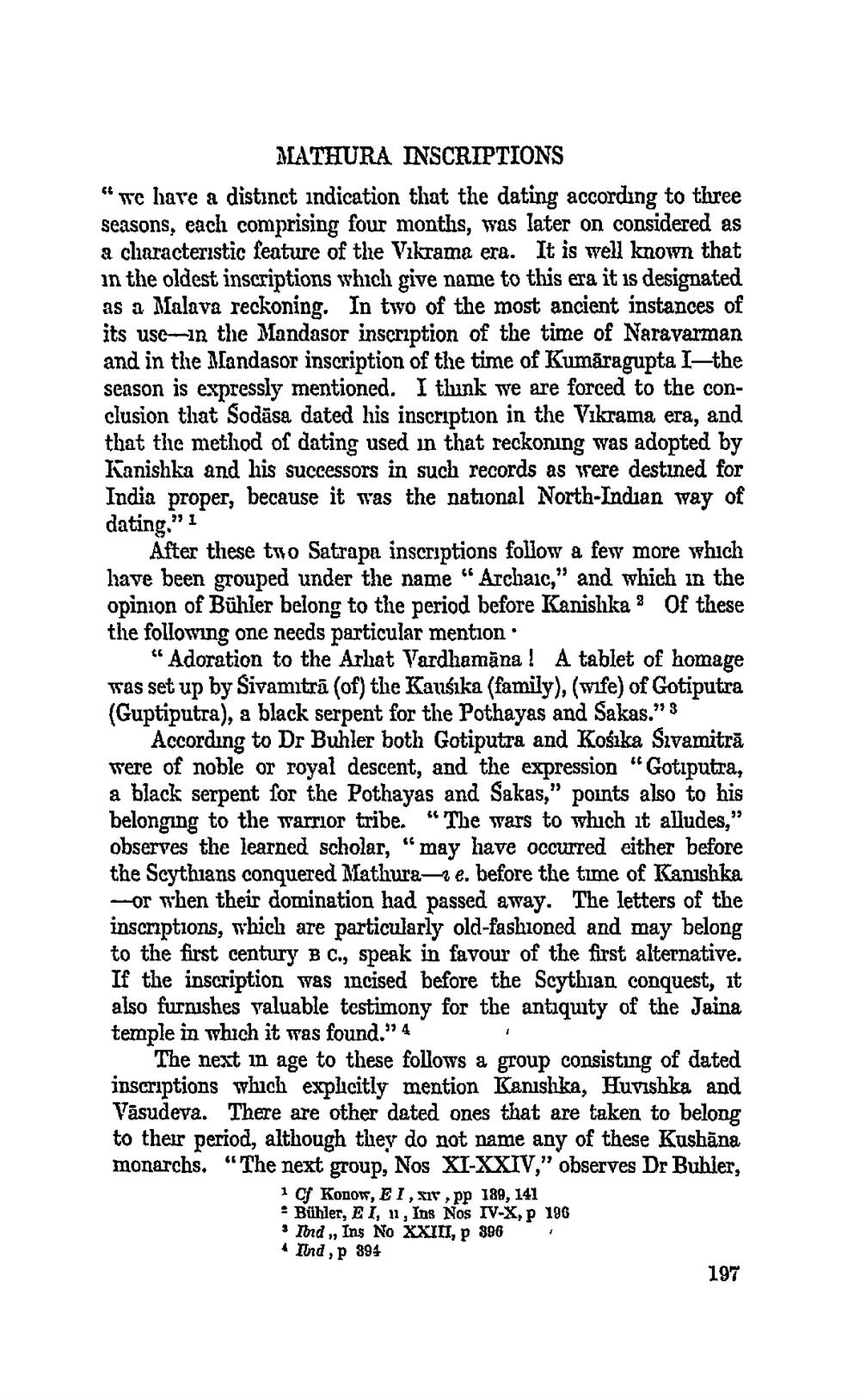________________ MATHURA INSCRIPTIONS * Te hare a distinct indication that the dating according to three seasons, each comprising four months, was later on considered as a characteristic feature of the Vikrama era. It is well known that in the oldest inscriptions which give name to this era it is designated as a Malava reckoning. In two of the most ancient instances of its usc-in the Mandasor inscription of the time of Naravarman and in the Mandasor inscription of the time of Kumaragupta I-the season is expressly mentioned. I thunk we are forced to the conclusion that Sodasa dated his inscription in the Vikrama era, and that the method of dating used in that reckoning was adopted by Kanishka and his successors in such records as were destined for India proper, because it was the national North-Indian way of dating." 1deg After these two Satrapa inscriptions follow a few more which have been grouped under the name "Archaic," and which in the opinion of Buhler belong to the period before Kanishka 3 Of these the following one needs particular mention "Adoration to the Arhat Vardhamana! A tablet of homage was set up by Sivamitra (of) the Kausika (family), (wife) of Gotiputra (Guptiputra), a black serpent for the Pothayas and Sakas." 3 According to Dr Buhler both Gotiputra and Kosika Sivamitra were of noble or royal descent, and the expression "Gotiputra, a black serpent for the Pothayas and Sakas," points also to his belonging to the varrior tribe. "The wars to which it alludes," observes the learned scholar, "may have occurred either before the Scythians conquered Mathura- e. before the time of Kanishka or when their domination had passed away. The letters of the inscriptions, which are particularly old-fashioned and may belong to the first century BC., speak in favour of the first alternative. If the inscription was incised before the Scythian conquest, it also furnishes Yaluable testimony for the antiquity of the Jaina temple in which it was found." 4 " The next in age to these follows a group consisting of dated inscriptions which explicitly mention Kanishka, Huvishka and Vasudeva. There are other dated ones that are taken to belong to their period, although they do not name any of these Kushana monarchs. "The next group, Nos XI-XXIV," observes Dr Buhler, 1 C Konox, E I, XIV, PP 189, 141 * Buhler, E I, 11, Ins Nos IV-X, 196 . Ind ,, Ins No XXIII, 806 4 Iund, p 894 197




